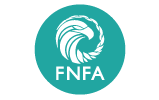-
FMA TOOLKIT: OVERVIEW & OPT-IN
On the pages of the FMA Toolkit you will find all the necessary information, regulatory legal documents, sample forms and case studies required to participate in the First Nations Fiscal Management Act (FMA), which is a required first step to accessing the powers and benefits accorded to First Nations through the First Nations Tax Commission (FNTC) and low-cost borrowing initiatives through the First Nations Finance Authority (FNFA).
FMA Fiscal Powers: Benefits to participating in the FMA.
The First Nations Fiscal Management Act, enacted in 2005, provides First Nations with access to a comprehensive property taxation framework. The FMA offers fiscal governance tools to increase revenue, improve financial management, and leverage property tax for long-term financing. The comprehensive FMA framework provides confidence to investors by providing expanded powers and creating responsibilities for First Nations, and by creating institutions to support First Nations in the exercise of these powers and responsibilities.
Under the FMA, First Nations are able to make laws regarding:
- Property taxation
- Fees for the provision of services, use of facilities, and for regulatory processes
- The expenditure of local revenues
- Establishing procedures by which the interests of taxpayers may be represented to the Council
- The borrowing of money from the First Nations Finance Authority (FNFA)
- The enforcement of laws in respect to outstanding taxes, charges or fees
- The delegation of law-making powers
First Nation tax authorities levy and collect real property taxes in the same manner as local governments throughout Canada. First Nation real property tax systems base taxation on a property assessment, use market value assessment methods, use professional assessors, and set rates based on a budget. Procedures for assessment appeals and tax enforcement in First Nation tax systems are also similar to local government approaches.
Taxation laws enacted under the FMA must comply with all statutory requirements, any regulations made under the FMA and any standards established by the FNTC.
FMA and Schedule
The FMA came into force on April 1, 2006. The links below go to the full legal document of the FMA and all Regulations of General Application.
-
STEP 1: HOW TO PARTICIPATE IN THE FMA
First Nations wishing to operate property tax regimes, obtain financial performance and financial management certification, or access a bond financing regime under the FMA, first require to be added to the FMA Schedule*.
All bands (as defined in the Indian Act) are eligible to be added to the FMA schedule of participating First Nations.
Once a First Nation has opted in and is added to the FMA schedule – through a Band Council Resolution – they have access to all of the FMA fiscal powers, and to the wide range of services offered by the fiscal institutions.
If you are considering opting in to the FMA:
If you’ve decided to proceed:
-
STEP 2: WORKING WITH THE FIRST NATIONS FISCAL INSTITUTIONS
Once a First Nation has been added to the FMA schedule, they can begin working with any or all of the First Nations institutions established under the FMA:
- First Nations Tax Commission (FNTC) is a shared-governance corporation that regulates and streamlines the approval of property tax and new local revenue laws of participating First Nations, builds administrative capacity through sample laws and accredited training, and reconciles First Nation government and taxpayer interests.
- First Nations Financial Management Board (FMB) is a shared-governance corporation which assists First Nations in strengthening their local financial management regimes and provides independent certification to support borrowing from First Nations Finance Authority and for First Nations economic development.
- First Nations Finance Authority (FNFA) is a non-profit corporation that permits qualifying First Nations to work co-operatively in raising long-term private capital at preferred rates through the issuance of bonds, and also provides investment services to First Nations.
The First Nations Institutions work together to improve the ability of First Nations governments to address the social and economic well-being of their communities, while providing the practical tools available to other governments for modern fiscal management.
-
NEXT STEPS: AS A PARTICIPATING FIRST NATION
To establish tax jurisdiction on reserve, First Nations first enact a Property Taxation and Property Assessment Law. To maintain their taxation system, they must pass an Annual Tax Rates Law and an Annual Expenditure Law. Most Nations then consider building on that established framework with additional local revenue laws such as a Development Cost Charge Law, a Property Transfer Tax Law, a Business Activity Tax Law, and a Service Fee/Taxes Law.
-
FAQs: TAXATION UNDER THE FMA



